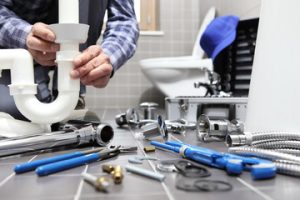A common issue that arises during Collision Repair Antioch is unanticipated expenses. Whether it’s hidden structural damage or complications with insurance coverage, these costs can significantly affect the final cost of repairs.

Whether you consider cars works of art or mode of transportation, our Collision Repair program prepares you for an exciting career in this highly specialized field. Learn how to restore vehicles back to their original condition with the right training and industry experience.
In order to properly repair a damaged vehicle, technicians must be skilled in multiple welding techniques. Welding involves melting and fusing together the surfaces of different metals, and it’s critical that these connections are strong enough to hold the weight of the vehicle and provide protection for its occupants in the event of a collision.
As the auto industry continues to push for lighter and stronger vehicles, the welding methods used in the shop have evolved as well. Many high-strength alloys, such as magnesium and advanced aluminum compositions, are now employed to reduce vehicle weight without sacrificing structural integrity. These specialized materials require a higher degree of precision to avoid warping or weakening of the surrounding base metals. Welding methods like shielded metal arc welding have been modified to accommodate these new materials, while newer technologies such as laser welding minimize heat-affected zones to prevent distortion and maintain the original strength of the base material.
The first step to successful welding is careful preparation of the work area. Technicians need to make sure the workpiece is free of dirt, dust or paint, and the proper welding electrodes are selected. They must also set the welder to the appropriate welding mode, such as MMA for aluminum or MIG for steel.
Technicians must be aware that welding settings can change significantly based on the welder’s position, such as vertical versus overhead welding. This can affect the appearance of the weld, and it’s important that technicians understand how these changes affect their welding results. For example, an improper arc voltage setting may not create a sufficiently hot weld, or it may produce uneven heat distribution.
A good welder is also capable of adapting to the conditions in the shop, including different welding positions, material types and thicknesses, and environmental factors such as humidity or air temperature. A skilled welder can quickly adjust to these conditions, ensuring that the quality of their work stays consistent no matter what.
One of the biggest challenges facing collision repairers is a lack of consistency in weld quality. Technicians are often unable to achieve the desired weld specifications, even when they have the right equipment and training. This is a result of many factors, including inadequate eyesight, resistance to changing their established technique, and a misunderstanding of how a specific welding process impacts the results.
Painting Techniques
Painting is one of the most important aspects of a collision repair job. A small mistake in this area can make an entire job look bad. A good painter knows how to use the proper techniques to create a flawless finish that matches the vehicle’s original color. The process of repainting a car is complex and requires meticulous attention to detail. It starts with surface preparation, where the technician cleans the damaged areas and sands them down for better stick. Next, the technician selects and applies the correct paint for the job. Finally, he or she blends the new paint into the surrounding areas for a perfect match.
When applying clear coat, a collision repair technician must pay special attention to blending the edges. This is necessary to prevent visible lines in the repaired areas, as well as to minimize product consumption and staggered accumulation of clear coat. It is also a good idea to use UV-cured coatings to ensure the best results and reduce your shop’s environmental impact.
In bodywork repainting, blending consists in “melting” the colour between the parts to be painted and those adjacent to them. It makes small colour differences unnoticeable to the eye.
Getting involved in an accident can be stressful enough without having to worry about how your vehicle will look after the repair work is done. That’s why Classic Collision offers a unique drop-off and pick-up service for our customers to give them peace of mind from the moment they drop their vehicle off until they receive it back. This also saves our customers time and money by allowing them to get their car back faster.
The field of auto body repair is a fascinating blend of art and science. It’s an industry that demands precision and creativity, as well as a thorough understanding of automotive design and engineering. Whether you’re interested in making your passion for cars into a career, or just want to brush up on your own skills, SCC’s Collision Repair and Refinish Technology program can help you take the first step toward a successful future.
Streamlined Scheduling
When it comes to repairing collision damage, there are many factors that can affect the overall repair timeline. These include repair shop capacity, specialized equipment, and the availability of parts. However, there are steps that can be taken to streamline the process and minimize delays. This includes maintaining proactive communication and making prompt decisions. Additionally, scheduling repairs during non-peak periods can help to reduce wait times.
The first step in the collision repair process is a thorough assessment of the damage. This evaluation can take several hours or a day to complete and will provide a detailed overview of the necessary repairs. If the vehicle is covered by insurance, the next step is a review and approval process with the insurer. This can add days to the repair timeline due to the increased administrative workload and the need for additional documentation.
Effective body shop management software can streamline estimating, scheduling, part ordering, and invoicing. By optimizing workflow, these tools can reduce bottlenecks and improve productivity, resulting in faster repair times and higher customer satisfaction. These programs can also handle adjuster coordination, direct billing, and supplemental claims to cover hidden damage.
Providing continuous training and OEM certifications can help to ensure that technicians are up-to-date on the latest repair procedures, reducing rework and increasing efficiency. In addition, a well-trained technician is more confident and valued in the workplace. This can make it easier to attract and retain qualified personnel in an industry struggling with worker shortages.
Whether you are an experienced mechanic or an autobody shop owner, efficient scheduling is critical to a successful business. A robust cloud-based scheduling system like Bookedin can automate appointment booking, reminders, and customer communications. This can save time and eliminate manual tasks that are often overlooked or mishandled. This can result in improved efficiency, a better customer experience, and a more successful business.
Customer Satisfaction
The collision repair industry faces several challenges, including customer satisfaction. When customers receive poor service, they often leave negative reviews and feedback on social media that can damage a business’s reputation. Investing in quality customer service, however, can help collision repair shops improve their profitability by attracting and retaining loyal customers.
Effective communication is the cornerstone of good customer service, and it’s especially important in the collision repair industry. Customers entrust their vehicles, which are significant investments, to auto body shops, and they expect quality repairs that restore their cars to pre-accident condition. Communicating with customers clearly and regularly, providing detailed estimates before starting work, and keeping them updated throughout the repair process are all ways that collision repair shops can build trust and demonstrate their professionalism.
Using technology for appointment scheduling, digital estimates, and progress tracking is another way that collision repair shops can streamline the process for both themselves and their customers. This helps to minimize wait times and reduce the number of unforeseen issues that might cause delays in the process. It’s also a good idea to provide customers with a free online estimate before beginning any work, which gives them an opportunity to review the costs of the services and ask any questions.
Finally, a quality repair job that meets or exceeds expectations can boost customer satisfaction and lead to repeat business. This is why it’s so important for technicians to be highly trained and certified in the latest repair techniques. Regularly evaluating technician skill levels and encouraging them to maintain their industry certifications can help to ensure that customers’ vehicles are repaired properly the first time around, which can reduce the number of costly “comeback” repairs.
Collision Repair is a valuable career for anyone who loves working with their hands and enjoys being challenged in their jobs. This exciting career offers great pay, excellent benefits, and a variety of opportunities to advance. Whether you want to start in the field right out of high school, earn a bachelor’s degree, or pursue a master’s, there’s a career path that can meet your goals.


